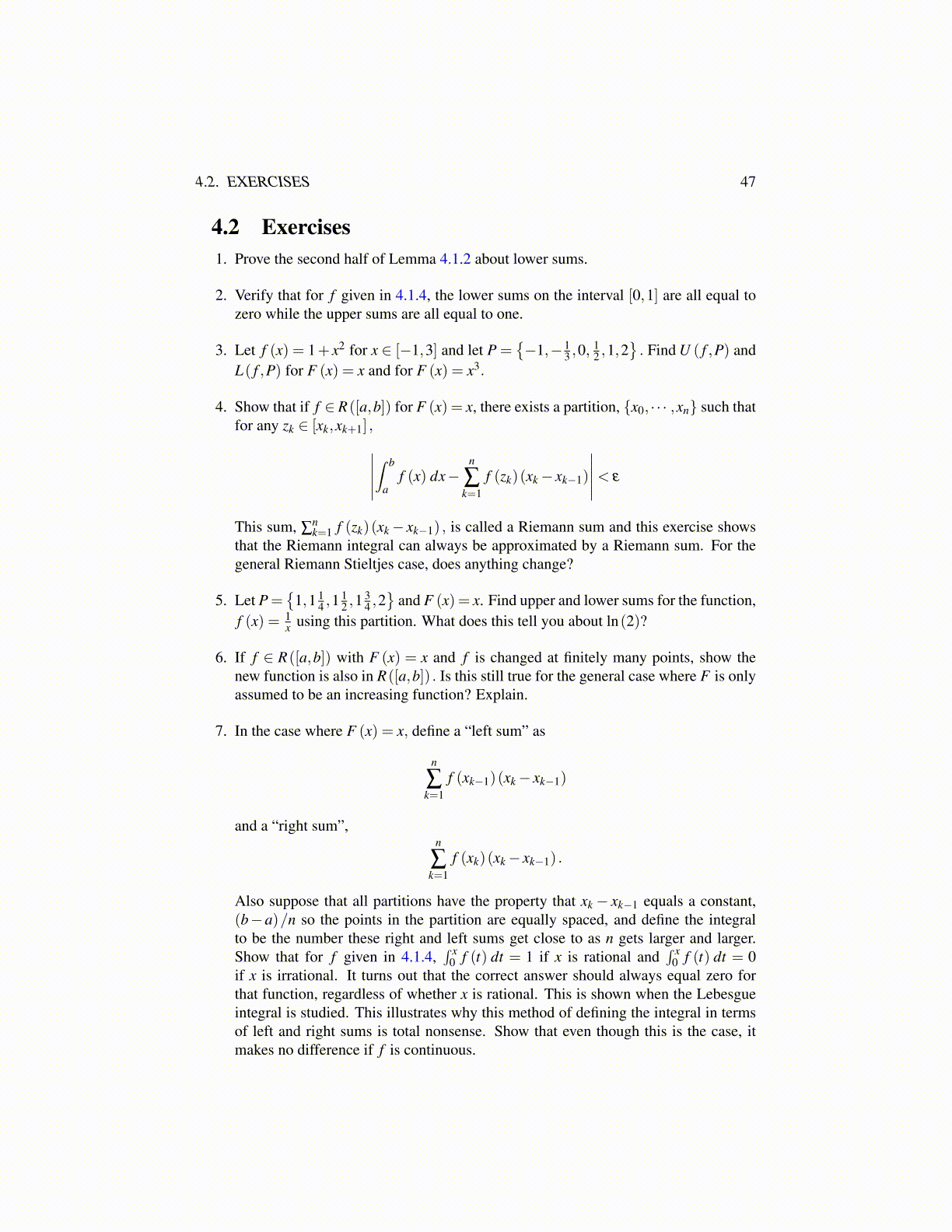
4.2. EXERCISES 47
4.2 Exercises1. Prove the second half of Lemma 4.1.2 about lower sums.
2. Verify that for f given in 4.1.4, the lower sums on the interval [0,1] are all equal tozero while the upper sums are all equal to one.
3. Let f (x) = 1+ x2 for x ∈ [−1,3] and let P ={−1,− 1
3 ,0,12 ,1,2
}. Find U ( f ,P) and
L( f ,P) for F (x) = x and for F (x) = x3.
4. Show that if f ∈ R([a,b]) for F (x) = x, there exists a partition, {x0, · · · ,xn} such thatfor any zk ∈ [xk,xk+1] ,∣∣∣∣∣
∫ b
af (x) dx−
n
∑k=1
f (zk)(xk− xk−1)
∣∣∣∣∣< ε
This sum, ∑nk=1 f (zk)(xk− xk−1) , is called a Riemann sum and this exercise shows
that the Riemann integral can always be approximated by a Riemann sum. For thegeneral Riemann Stieltjes case, does anything change?
5. Let P={
1,1 14 ,1
12 ,1
34 ,2}
and F (x) = x. Find upper and lower sums for the function,f (x) = 1
x using this partition. What does this tell you about ln(2)?
6. If f ∈ R([a,b]) with F (x) = x and f is changed at finitely many points, show thenew function is also in R([a,b]) . Is this still true for the general case where F is onlyassumed to be an increasing function? Explain.
7. In the case where F (x) = x, define a “left sum” as
n
∑k=1
f (xk−1)(xk− xk−1)
and a “right sum”,n
∑k=1
f (xk)(xk− xk−1) .
Also suppose that all partitions have the property that xk− xk−1 equals a constant,(b−a)/n so the points in the partition are equally spaced, and define the integralto be the number these right and left sums get close to as n gets larger and larger.Show that for f given in 4.1.4,
∫ x0 f (t) dt = 1 if x is rational and
∫ x0 f (t) dt = 0
if x is irrational. It turns out that the correct answer should always equal zero forthat function, regardless of whether x is rational. This is shown when the Lebesgueintegral is studied. This illustrates why this method of defining the integral in termsof left and right sums is total nonsense. Show that even though this is the case, itmakes no difference if f is continuous.